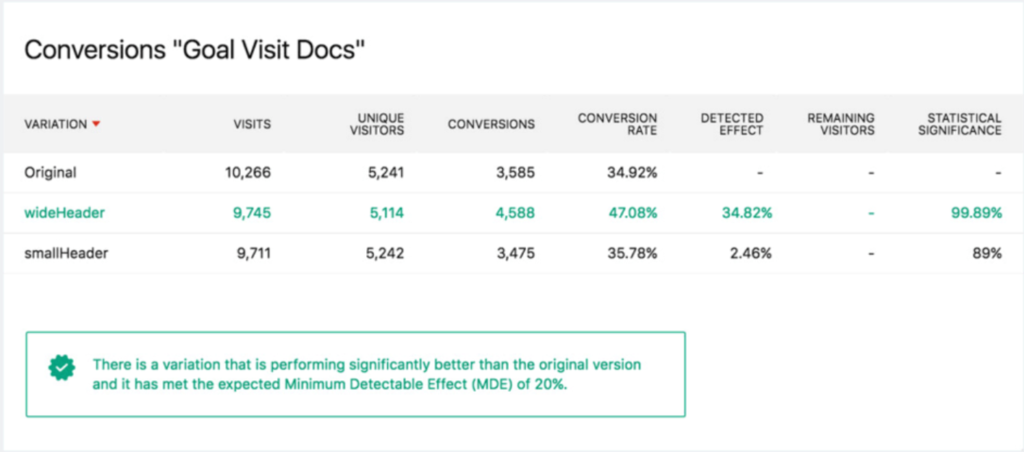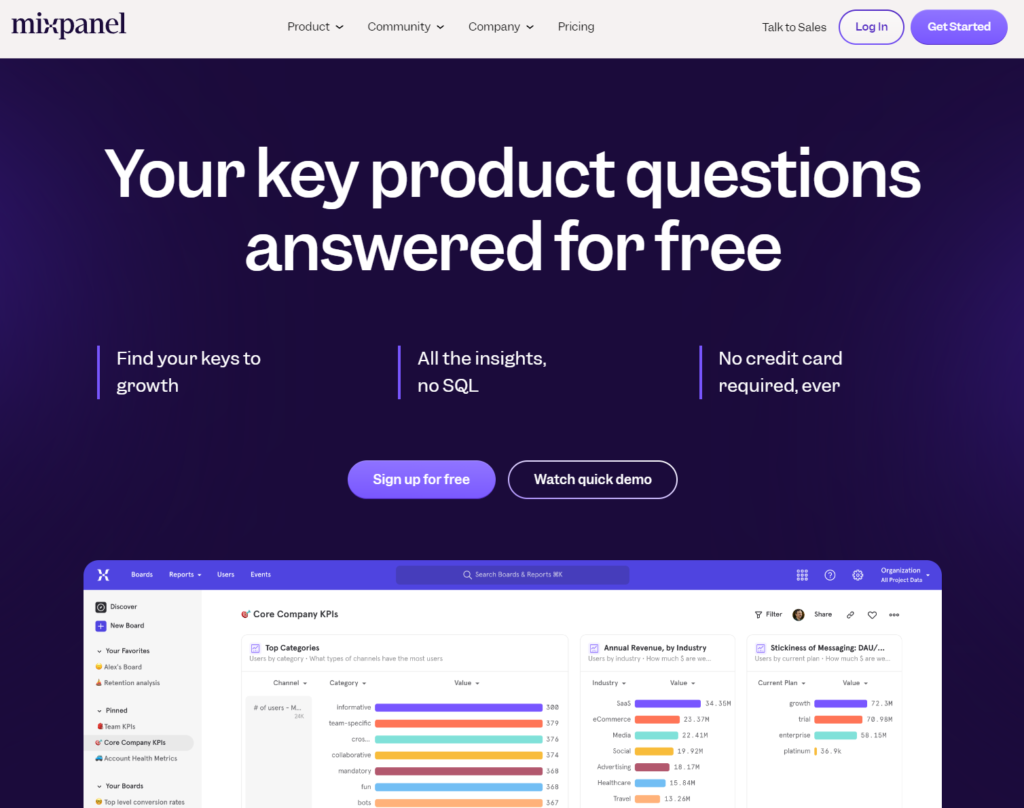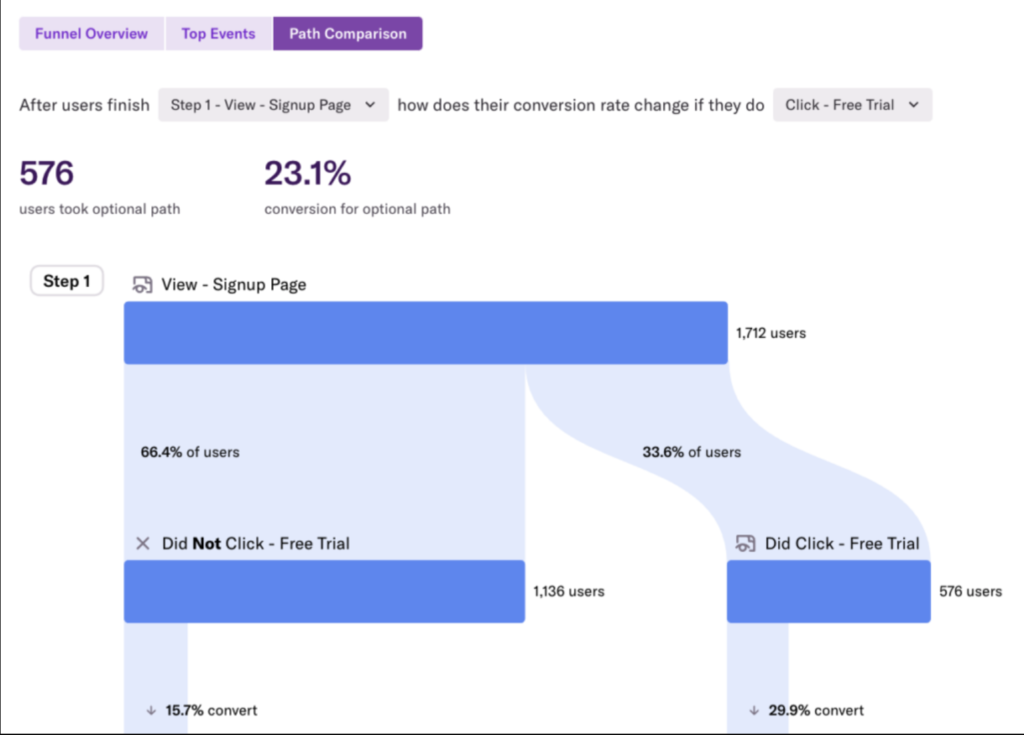While Google Analytics has long been the industry standard for web analytics, several viable alternatives offer unique strengths and features to suit different business needs. We will delve into the top five Google Analytics alternatives for 2023, offering marketers and business owners a detailed overview of each solution’s unique characteristics, advantages, and potential limitations.
- Matomo (formerly Piwik)
- Clicky
- Mixpanel
- Heap Analytics
- Kissmetrics
Matomo
Launched in 2007, Matomo was developed as an alternative to proprietary analytics solutions, offering users full control over their data and enhanced data privacy.
One of the most significant advantages of Matomo is its self-hosted and open-source nature. This means that businesses have the freedom to install Matomo on their own servers, granting them complete ownership and control over their data. The open-source model allows users to access and modify the source code, enabling extensive customisation and integration with other tools and platforms.
With increasing concerns about data privacy and regulations such as GDPR (General Data Protection Regulation), Matomo’s self-hosted approach ensures that businesses can maintain compliance with data protection laws. By hosting data on their own servers, businesses have the assurance that sensitive user data is not shared with third-party providers.

Matomo provides real-time analytics, allowing businesses to monitor user activity and website performance as it happens. This immediate feedback is invaluable for making timely decisions, optimising marketing campaigns, and responding to emerging trends or issues promptly.
It also offers highly customisable dashboards, enabling users to create personalised reports and visualisations that cater to their specific business needs. This flexibility allows businesses to focus on the metrics that matter most to them and gain deeper insights into their website’s performance.
Additionally, Matomo includes heatmaps and A/B testing capabilities, which are essential tools for optimising website design and user experience.
Heatmaps visually represent user interactions on web pages;

While A/B testing allows businesses to test different variations of a page to determine the most effective one.

Like GA4, this platform supports cross-domain and cross-device tracking, enabling businesses to track user interactions across multiple websites and devices. This feature provides a comprehensive view of the customer journey, essential for understanding user behavior in today’s multi-device and multi-platform world.
Clicky
Clicky is a real-time web analytics platform known for its user-friendly interface and immediate insights into website performance.

One of Clicky’s most distinctive features is its real-time monitoring capabilities. Users can access up-to-date data instantly, allowing them to track website traffic, user behavior, and marketing campaigns in real-time.
This platform is designed with an intuitive and user-friendly interface, making it accessible to marketers and business owners with varying levels of technical expertise.
Clicky also offers heatmaps, a visual representation of user interactions on web pages; provides on-site analytics, offering insights into how users interact with elements on a web page and includes uptime monitoring, notifying users in real-time if their website experiences downtime or becomes unavailable. This feature helps businesses promptly address technical issues and minimise website downtime, ensuring a positive user experience.
Trust, transparency, and simplicity define Clicky, making it the go-to choice for marketers and business owners seeking a powerful, yet user-friendly web analytics solution.
Mixpanel
Mixpanel is a powerful user analytics and engagement platform primarily designed for mobile and web applications. Its strength lies in cohort analysis and retention metrics, making it an ideal choice for businesses seeking to understand user behavior at a granular level.

At the core of Mixpanel’s offering is its user analytics and engagement focus. Unlike traditional analytics platforms that focus on pageviews and website metrics, Mixpanel delves deeper, providing businesses with a granular understanding of individual user interactions. By tracking events and actions across web and mobile applications, Mixpanel enables businesses to gain valuable insights into user behavior, preferences, and pain points.
Understanding user retention is critical for any business’s success. Mixpanel excels in cohort analysis, a powerful technique that groups users based on specific behaviors or attributes. This capability allows businesses to observe how user behavior evolves over time, identify trends, and optimise engagement strategies. Cohort analysis proves particularly valuable for businesses seeking to enhance user retention and increase long-term customer value.

This platform goes the extra mile with its personalisation and A/B testing features. Mixpanel makes it easy to set up A/B tests. Users can create experiments by defining the variations they want to test, such as different website layouts, button colors, or app screen designs. The platform then evenly splits traffic among the variations to ensure a fair comparison. One of the key advantages of A/B testing here is real-time monitoring. As users interact with the variations, Mixpanel provides live updates on how each variant is performing.

Heap Analytics
Heap Analytics takes a unique approach by automatically capturing all user interactions on a website or app, eliminating the need for manual event tracking. The platform offers real-time and retroactive analysis, allowing businesses to explore past data and discover new patterns.
Heap Analytics is designed with a user-friendly interface, navigating through data and generating reports is intuitive, even for users with limited technical expertise. The platform’s simplicity ensures that businesses can focus on interpreting insights and making data-driven decisions without grappling with complex tools.

At the heart of Heap Analytics lies its automated data capture capabilities. Unlike traditional analytics tools that require manual event tracking setup, Heap Analytics automatically captures all user interactions, eliminating the need for additional coding or tagging. This automation streamlines the analytics process, freeing businesses from the burden of manual tracking and ensuring comprehensive data coverage.
One of Heap Analytics’ standout features is retroactive analysis. With this capability, businesses can explore past data and uncover insights that may have been overlooked in real-time monitoring. This historical data exploration empowers businesses to identify trends, user behavior patterns, and growth opportunities they might have missed otherwise.


As can be seen in the above images, Heap Analytics offers customisable funnel analysis, allowing businesses to track specific user journeys and conversion funnels with ease. By understanding how users progress through critical actions, businesses can identify drop-off points, optimise conversion funnels, and boost user acquisition and retention rates.
Heap Analytics emerges as a game-changing web analytics platform that redefines the way businesses capture and interpret data. With automated data capture, retroactive analysis, and a user-friendly interface, Heap Analytics simplifies the analytics process, enabling businesses to focus on data-driven insights and decision making. The Event Visualiser, customisable funnel analysis, and advanced segmentation empower businesses to optimise user experiences and drive higher engagement. Trust and security are at the core of Heap Analytics, ensuring businesses can analyse data with confidence.
Kissmetric
Kissmetrics stands out as a customer journey tracking platform, providing in-depth insights into user interactions across multiple touchpoints. With a strong emphasis on customer-centric analytics, Kissmetrics aims to help businesses build strong, lasting relationships with their customers.


Unlike traditional web analytics that focus on aggregate data, Kissmetrics takes a user-centric approach. It provides businesses with individual-level tracking, allowing them to understand how specific users interact with their website or application, and how their behavior evolves over time.
In addition to tracking user acquisition, Kissmetrics provides robust retention analytics. Businesses can monitor user retention rates, measure churn, and identify strategies to boost customer loyalty. Kissmetrics allows users to run A/B tests and experiments to evaluate the effectiveness of different marketing strategies or website variations. This data-driven approach helps optimise campaigns for better performance.

With a focus on user-centric analytics, behavioral tracking, funnel analysis, and customer segmentation, Kissmetrics empowers businesses to make data-driven decisions and enhance user experiences. Its email campaigns, retention analytics, and A/B testing capabilities further contribute to driving growth and success.
Whether you’re looking to replace Google Analytics for specific reasons or just curious about other options, the market offers an array of alternatives to explore. Matomo’s self-hosting ensures data privacy and customisation, Mixpanel and Kissmetrics focus on user behavior and customer journey tracking, Clicky offers real-time monitoring and user-friendliness, while Heap Analytics automates data capture for simplified analytics. By carefully considering the characteristics, pros, and cons of these alternatives, you can choose the most suitable web analytics tool to gain valuable insights and elevate their digital strategies to new heights in the ever-evolving digital landscape.


